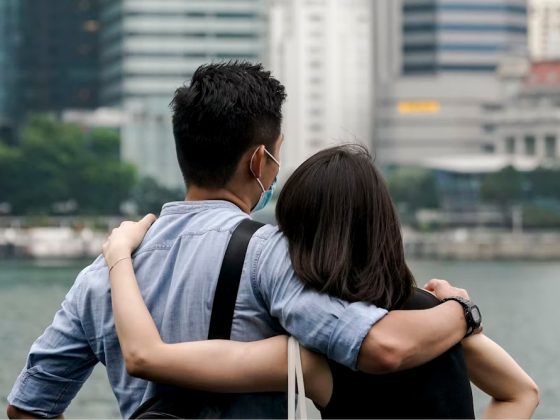The pandemic has created a cyclical public health problem by harming mental health while also making it more difficult for people to maintain physical activity, report researchers.
Their study also reveals that lower-income households struggled more with both mental health challenges and maintaining physical activity levels.
“We know that physical activity is important for helping people maintain their mental health, but this study reveals the unforgiving cycle that the pandemic has imposed on many people,” says Lindsey Haynes-Maslow, coauthor of the study and an associate professor of agricultural and human sciences at North Carolina State University.
“The pandemic has increased psychological distress, which makes it more difficult for people to maintain their physical activity levels. This, in turn, further hurts their mental health, which makes them less likely to be active, and so on. Once you get on this roller coaster ride, it’s hard to get off. And all of this is exacerbated by the pandemic making it harder for people to find safe spaces in which to exercise.”

For this study researchers were focused on two questions: How is the pandemic influencing physical activity and mental health status? And how, if at all, do physical activity and mental health status relate to each other?
To address those questions, the researchers conducted an in-depth, online survey of 4,026 adults in Louisiana, Montana, North Carolina, Oregon, and West Virginia. The survey took place between April and September of 2020.
The researchers found that the more physically active people were, the better their mental health status. That held true even when accounting for an individual’s race/ethnicity, household income, and other socioeconomic demographic variables.
The researchers also found that the higher an individual’s household income, the more likely they were to be able to maintain pre-pandemic physical activity levels. Specifically, people in households that earned less than $50,000 per year were 1.46 times less likely to maintain their pre-pandemic levels physical activity as compared to people in households that earned more than $50,000 per year.
In addition, the survey found that participants in urban areas were more likely to report difficulty maintaining their pre-pandemic physical activity levels, as compared to study participants in rural areas.
“This rural/urban finding was somewhat surprising, because normally—when we’re not in a pandemic—people in rural areas tend to report more mental health challenges than their urban counterparts,” Haynes-Maslow says.
“Fortunately, the survey was designed to help understand each study participant’s mental health and physical activity levels before and during the pandemic,” says Shelly Maras, coauthor of the paper and a PhD candidate at NC State. “The survey also included open-ended questions that allowed us to analyze rich, qualitative data related to respondents’ mental health and physical activity.”
The open-ended survey results revealed that many participants struggled with staying active during stay-at-home orders, but rural participants talked about how their open spaces and places provided more opportunities to get outside and get moving. Participants also talked about how caregiving, exhaustion, and mental health stressors kept them from being active, perpetuating the cycle.
“Our findings drive home that mental health is a persistent challenge during this pandemic,” says Annie Hardison-Moody, coauthor of the study and an associate professor of agricultural and human sciences at NC State. “This survey data helps us understand what people were going through during those early months of the pandemic. It also helps us understand the importance of having access to open spaces and the barriers that are in place preventing people from accessing those spaces.”
“We’re still in a pandemic,” Haynes-Maslow says. “But it’s clear that we need a playbook in place for what we do in future crises to help people be active and protect their mental health.
“We need structural changes in communities to ensure people have equitable access to safe spaces where they can be active. That will require policy changes and funding to create the necessary infrastructure: sidewalks, streetlights, green spaces. This will require significant investment, and it will take time, so we need to begin acting on this now. It is much less expensive to invest now than it is to pay for the long-term consequences of poor physical and mental health.”
The paper appears in the journal Preventive Medicine Reports. Collaborators on the work are from Montana State University, West Virginia University, Louisiana State University, Western Oregon University, and the Gretchen Swanson Center for Nutrition.
The National Institutes of Health provided funding for the work.
Source: NC State
Original Study DOI: 10.1016/j.pmedr.2021.101537
Republished from Futurity










